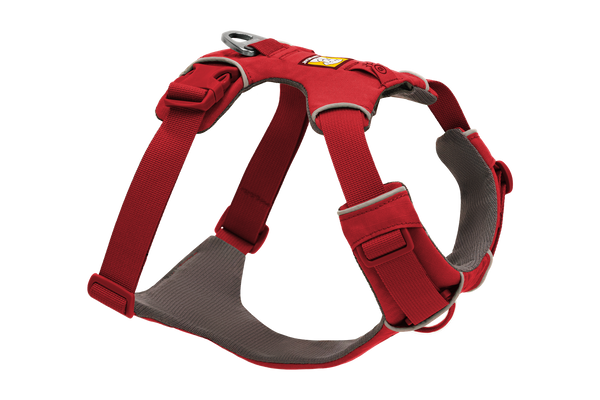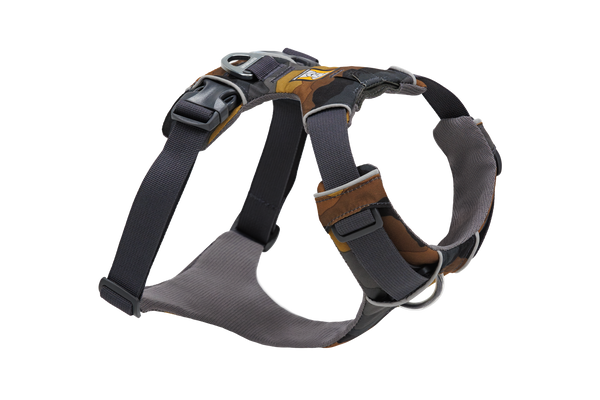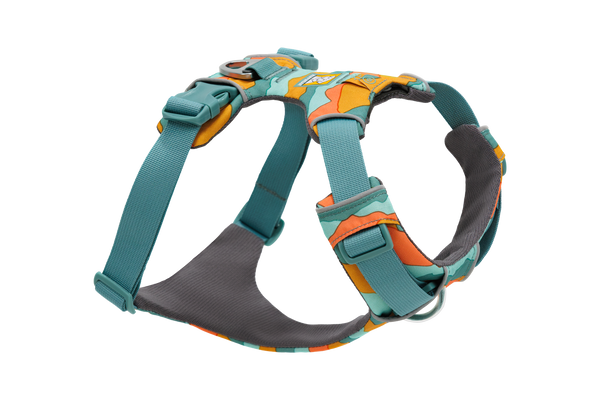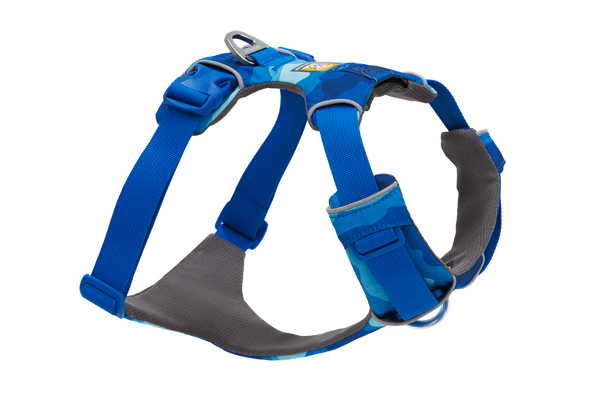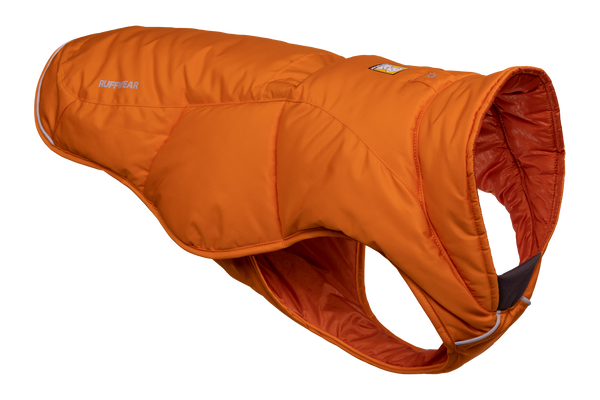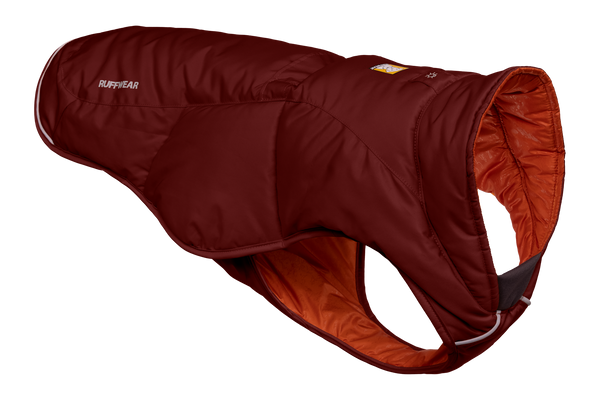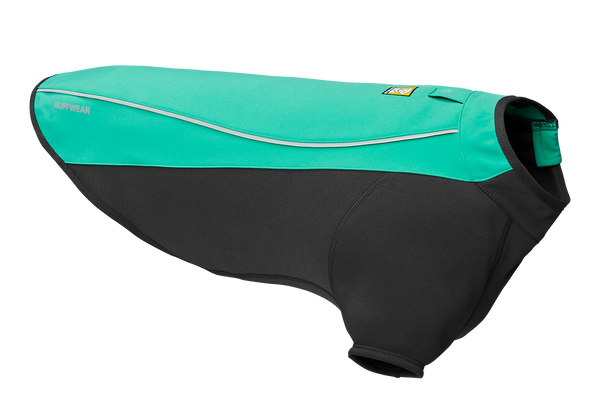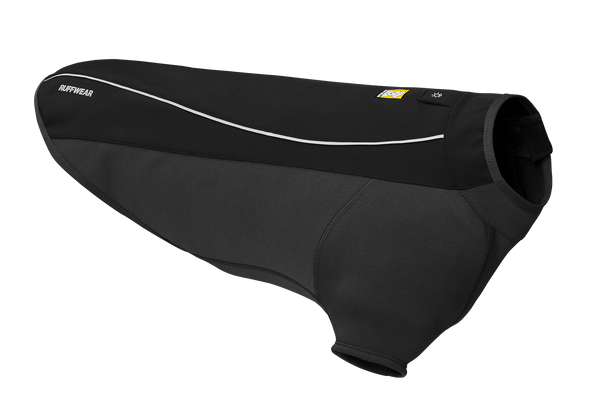Sustainability Update: Joining the Climate Action Corps
Ruffwear is continuing our commitment to do business better by joining the Outdoor Industry Association’s Climate Action Corps as a Founding Member.
Sustainability is at the core of how Ruffwear does business. For us, success includes embracing our responsibility to our community and to our planet – conducting our business in a way that maximizes the good we can do in the world while being cognizant of the impact we have on the planet.
To do that, we need visibility into how doing business as Ruffwear leaves a mark. The Outdoor Industry Association’s (OIA) Climate Action Corps is a bold collaborative effort that will help us and others in the outdoor industry do just that.

As part of the commitment we’ve made to the Climate Action Corps (the Corps), we’ll:
- Measure our current carbon footprint
- Set ambitious greenhouse gas reduction goals
- Create plans specific to Ruffwear and pursue reductions over time
- Publicly share our progress each year
The Corps will provide resources, support, and a community to help us dig deeper into things like:
- Carbon offsets
- Carbon pricing
- Carbon pollution, environmental health, and public health
- Policy agenda
- Pursuing progress
- Renewable energy
- Sharing outcomes
- Social justice
- Transparency
We’ll get to collaborate with other members of the Corps in reducing carbon emissions and ensure that together, we are a force for climate action. Let’s take a closer look at what it means to be a part of the Corps and the work that’s already underway at Ruffwear as we Measure, Plan, Reduce, and Share.
Measure (Our Carbon Footprint)
Knowing where we’re at gives us a benchmark. A reliable baseline year and consistent measurement methods allow us to compare and see changes in our impact in the near- and long-term.
We have all the records necessary to complete these measurements and set 2019 as our baseline year. 2020 is a no-go as a baseline year industry-wide. Coronavirus has disrupted just about every facet of business, and the data will not be representative of a typical year.
There are three phases for measuring our baseline:
- Understand each of our emissions sources and draw operational boundaries to determine what “scope” they fall under (Figure 1):
- Scope 1: Any fossil fuels we burn on-site. Example: natural gas to heat the building, fuel we burn in the Ruffwear van.
- Scope 2: The energy we purchase to run operations. Example: electricity at our Bend, Oregon headquarters.
- Scope 3: All other indirect emissions sources involved in making, transporting, storing, distributing, using, and disposing of our gear.
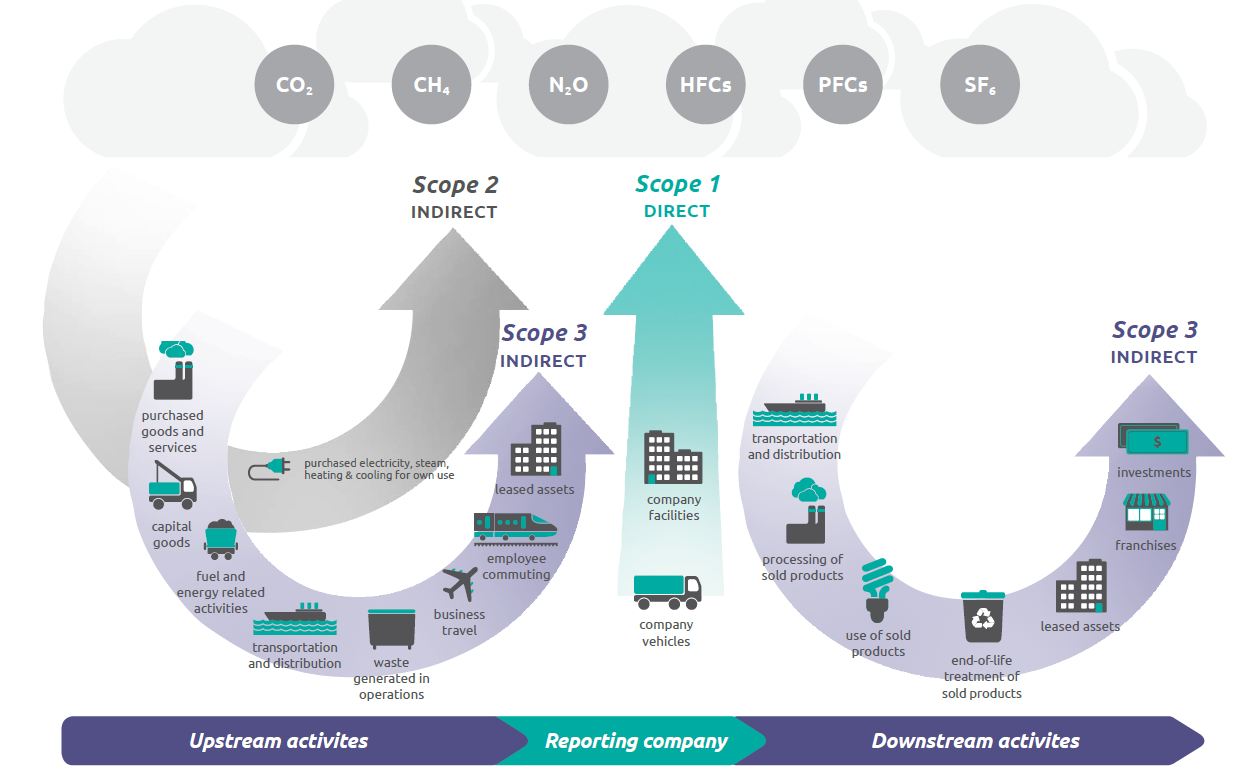 [Figure 1. Visual reference from the GHG Protocol of the three scopes of GHG emissions within a value chain. Credit: GHGProtocol.org]
[Figure 1. Visual reference from the GHG Protocol of the three scopes of GHG emissions within a value chain. Credit: GHGProtocol.org]
- Gather data
- Scope 1 & 2 (utility bills and fuel receipts)
- Scope 3 (income statements, 3PL transport invoices, etc.)
- Calculate measurements for each scope through the Greenhouse Gas (GHG) Protocol – a widely accepted standard for greenhouse gas accounting. Tools we’re using:
- Simplified GHG Emissions Calculator from the EPA
- The Higg Index
- Brand Emissions Estimator (BEE) from Climate Neutral
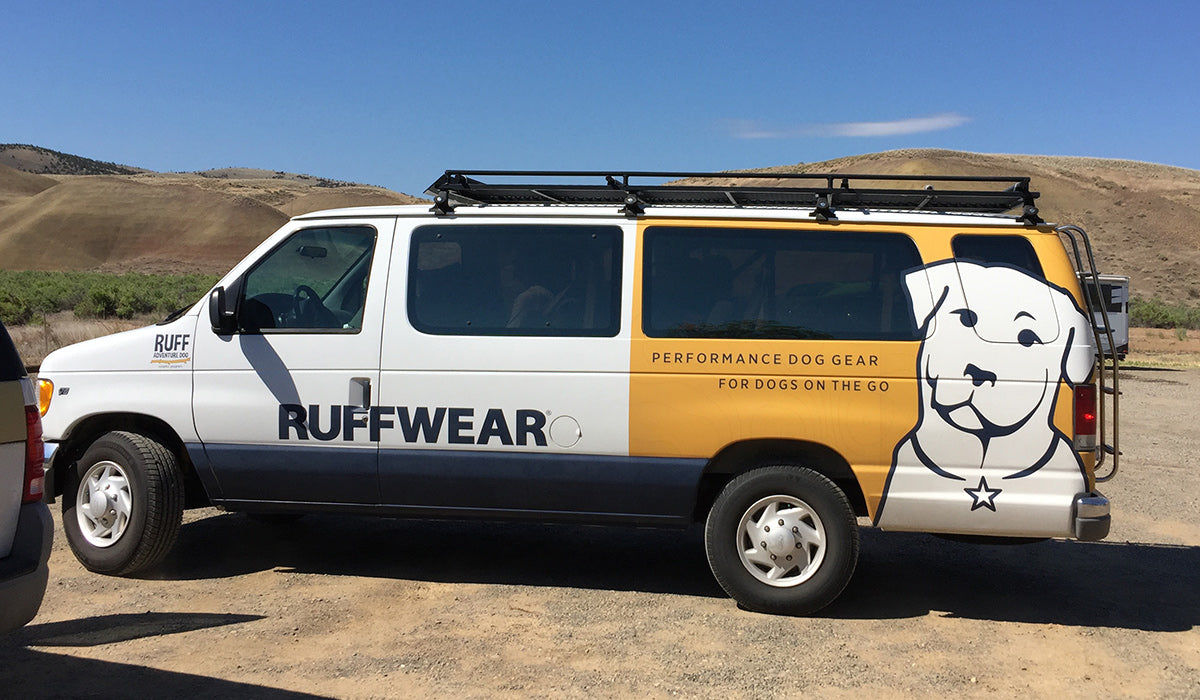 [Above: Yes, even the fuel that goes in our Ruffwear van is accounted for when gathering data about our greenhouse gas emissions]
[Above: Yes, even the fuel that goes in our Ruffwear van is accounted for when gathering data about our greenhouse gas emissions]
It's a lot to track down and navigate through, but thankfully we've got Kelly as our Sustainability Coordinator to lead the charge. And she's fired up about the path we're on.
We’re deep into the Understanding phase, and we’re beginning the Gather and Calculate phases simultaneously. Measurement of Scope 3 is vast, likely containing around 95% of our total emissions. Missing or inaccurate data within this scope would skew our baseline calculation.
The BEE tool from Climate Neutral is a module pre-populated with emissions factors appropriate to various activity types. It helps us see all the information we need to gather and plug into these tools so we don’t miss anything.
Since the tool is an estimator, we’ll take our time refining these modules to get an accurate approximation for our specific business. That way, consecutive years of inputting the data will highlight the effects of the decisions we make to run our business in a climate-conscious manner.
The good news is that we can be at different stages of data gathering and start the work to make reduction-minded changes at the same time based on generally accepted best practices. And we're doing that now.
Our 2019 electricity bills give us an accurate benchmark for our energy usage at our Bend HQ. Since using a portion of renewable energy to power our operations is a better practice than solely buying fossil fuel-based electricity off the grid, we have a path forward and can set a reduction goal.
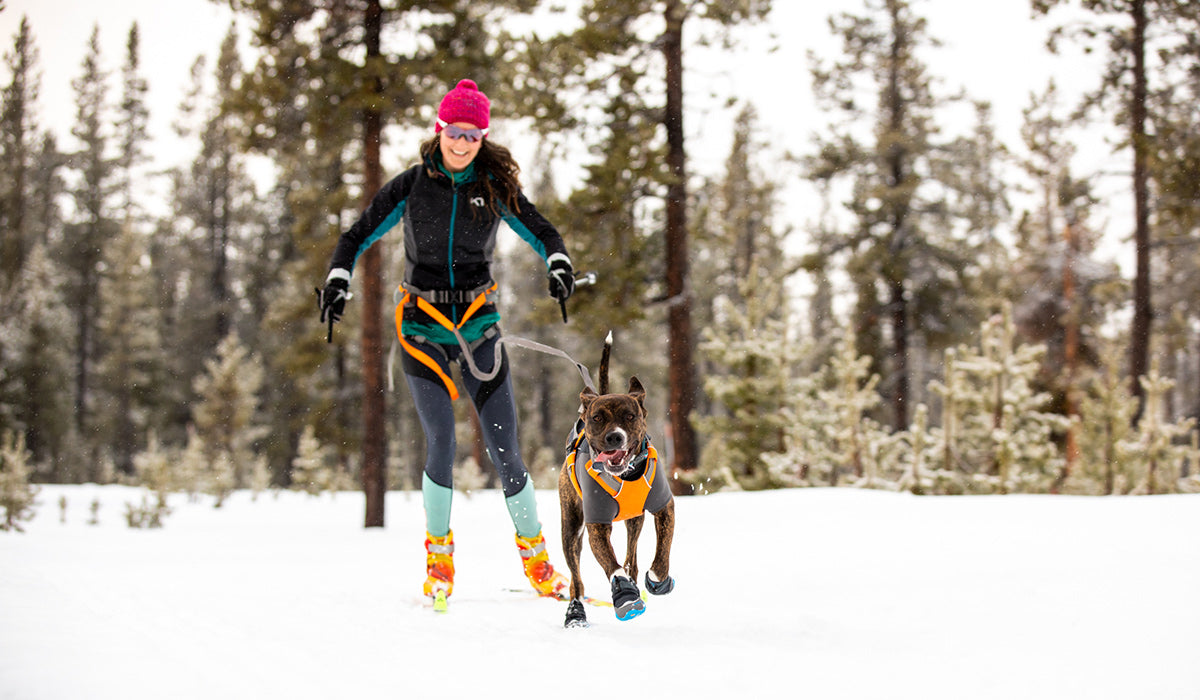
[Above: Our Sustainability Coordinator, Kelly, and her dog Juniper]
Plan (Set Reduction Goal)
Setting a reduction goal means using the best available knowledge to set a strategic objective for lower greenhouse gas emissions. The data we gather when measuring our baseline, along with learning from our fellow industry partners in the Corps, will provide us with key background information to set aggressive, achievable goals for the future.
As a part of the Corps, we can learn from within our own industry. We can learn what magnitudes of reductions are possible on what timescale and how like-companies are achieving them. We're working toward having reduction goals set by the end of 2020 for Scope 1 and 2 emissions.
Reduce (Immediate and Ongoing Actions)
Even while measuring our baseline or setting our reduction goals, we can begin with reductions that we can implement immediately.
In the first quarter of 2020, we installed a photovoltaic system (solar panels) on the roof of Embark – the building where Ruffwear's HQ is located.
The south-facing roof in our very sunny Central Oregon town was a no-brainer for us to take our first dip into the renewable energy pool.
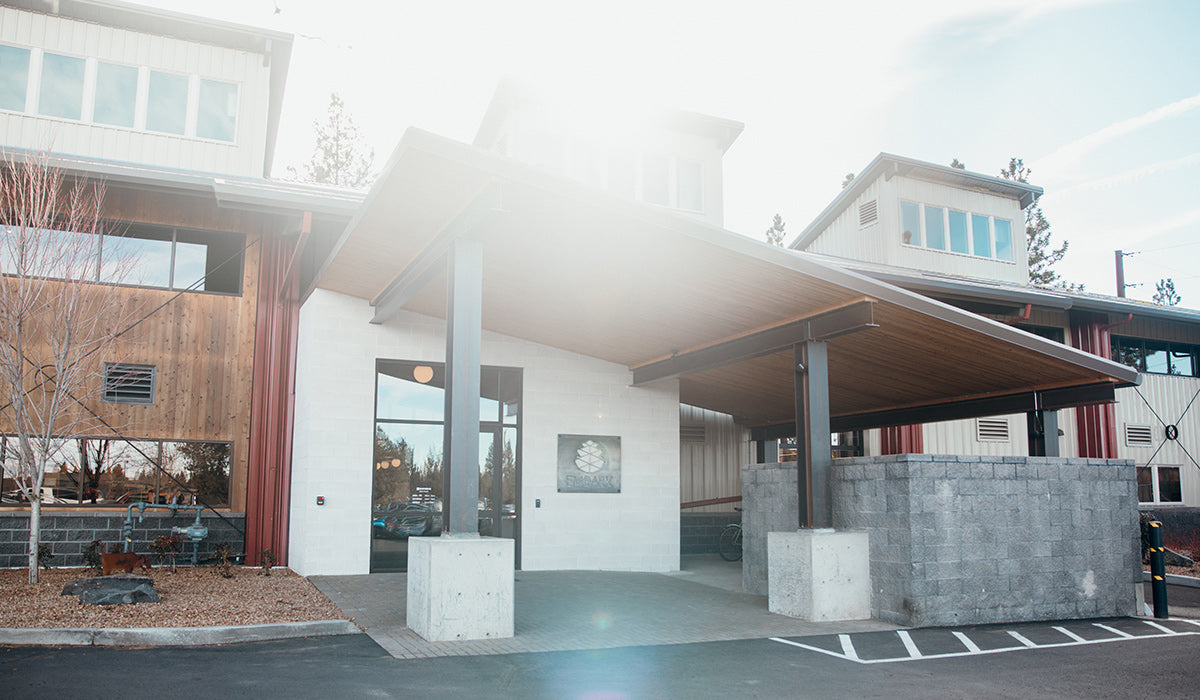 [Above: Ruffwear is headquartered at Embark in Bend, Oregon]
[Above: Ruffwear is headquartered at Embark in Bend, Oregon]
These solar panels support our effort to replace a portion of the fossil fuel-based energy we use with renewable energy. All solar energy produced on our roof is captured and sent back to the grid. The amount we produce on-site is credited toward what we pull from the grid to power the building.
To hit Scope 3 emissions reduction goals, we’ll need internal coordination and external collaboration. We’ll need to focus on sourcing more low-carbon materials, increasing efficiencies, and seeking growth apart from nonrenewable resource extraction. It’s a little intimidating, but we’re excited. Scope 3 within this stage is where the intensity of change we can effect is strongest.
Share (Publicly)
Part of our commitment to the Corps means we will be submitting progress reports on an annual basis. OIA will compile and summarize the collective measurable progress made by the industry on the whole. Member companies can begin to see the impact we can make when we come together as an industry.
And of course, we’ll be sharing our journey of climate action with you in our own way, too.
Our solar panels have been our biggest news to share at the moment – they're officially up and running. The rooftop system is estimated to produce 90,000 kWh/year. For reference, that's equivalent to 157,900 miles driven by an average vehicle, or about 70,115 pounds of coal burned. The estimated carbon emissions that will be avoided by having this rooftop system is equivalent to the carbon that would be sequestered by 83.1 acres of forest per year.

[Above: The new solar panels on the south-facing roof of Embark – the building where Ruffwear is headquartered]
As we learn more, plan more, and do more – we’ll share more. If you want to stay in the loop, tune in for more stories here on the blog, on social @ruffwear, and in your inbox.




